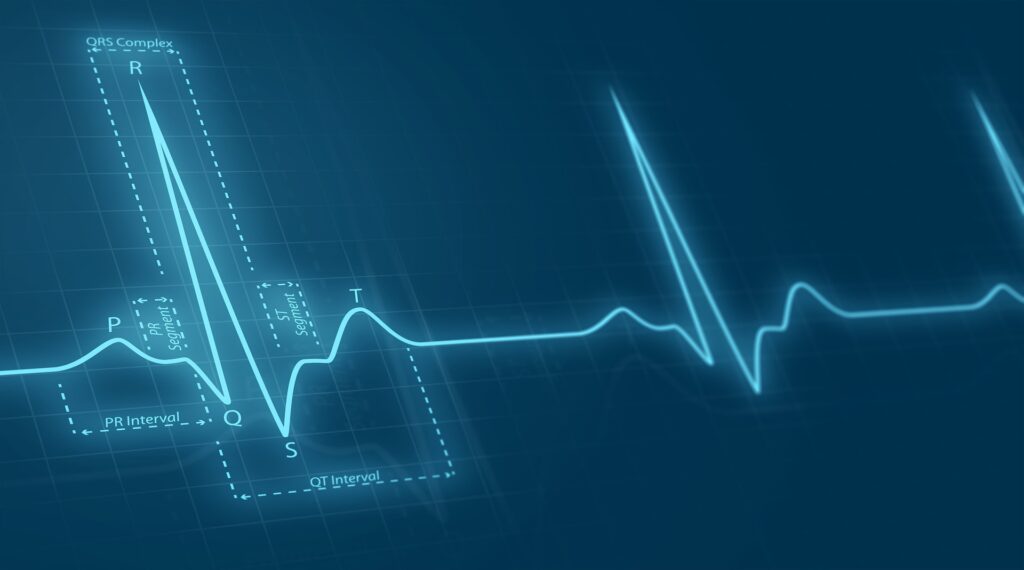As unlicensed medication is increasingly deployed against COVID-19 by medical staff desperate to save their patients, a new study looks into how to determine who can bear the treatment, and who can’t.

The current pandemic is pushing doctors and researchers to find safe treatments for patients with COVID-19, and several candidates are already being tested. Until certified treatment options are made available, however, doctors are throwing anything that works against the virus in a bid to give those suffering from the worst cases a shot at life.
However, a new study cautions that certain patients are at risk of dying from such treatments. Some medications can affect (prolong) the QTc of certain patients, an indicator that quantifies the length of an individual’s heartbeats. Patients are at increased risk of life-threatening ventricular rhythm abnormalities that can culminate in sudden cardiac death when their QTc gets too long.
The heart of the matter
“Correctly identifying which patients are most susceptible to this unwanted, tragic side effect and knowing how to safely use these medications is important in neutralizing this threat,” says Michael J. Ackerman, M.D., Ph.D., a Mayo Clinic genetic cardiologist and director of the Mayo Clinic Windland Smith Rice Comprehensive Sudden Cardiac Death Program.
A study published in Mayo Clinic Proceedings examines the potential dangers of using uncertified drugs to treat the outbreak and showcase the potential application of QTc monitoring to guide treatment when using such drugs.
Hydroxychloroquine is one of the compounds pushed in the fight against SARS-CoV-2 and, from the limited data we have so far, it does seem to be effective. Hydroxychloroquine was designed as a preventive and treatment compound against malaria and is also used to manage and minimize symptoms of inflammatory immune diseases, such as lupus and rheumatoid arthritis. In laboratory tests, hydroxychloroquine has prevented both the SARS-CoV and SARS-CoV-2 viruses from infecting (animal) cells, suggesting that it could work similarly in humans.
On a cellular level, some medications, including hydroxychloroquine, can block the potassium channels that underpin our heart muscles’ ability to contract — which interferes with our natural cardiac rhythm.

Image via Wikimedia.
The Mayo Clinic team has pieced together an emergency guide on how to use 12-lead electrocardiograms (ECG), telemetry ECG, or smartphone-enabled mobile ECG, to determine a patient’s QTc in order to minimize the change of drug-induced cardiac arrest.
“Right now, it is the Wild West out there, ranging from doing no QTc surveillance whatsoever and just accepting this potential tragic side effect as part of ‘friendly fire,’ to having ECG technicians going into the room of a patient with COVID-19 daily, exposing them to coronavirus and consuming personal protective equipment,” says Dr. Ackerman.
“Here Mayo Clinic has stepped forward to provide timely and critical guidance.”
The guides put forth by the team (essentially) explain the following:
The antimalarial drugs chloroquine and hydroxychloroquine, alongside the HIV drugs lopinavir and ritonavir, are all known to possibly induce ventricular arrhythmias and sudden cardiac death. It is important to get an ECG measurement on the patient before administering these drugs to establish a baseline. This starting point measurement could be from a standard 12-lead ECG, telemetry or a smartphone-enabled mobile ECG device. The team notes that the Food and Drug Administration (FDA) granted emergency approval of AliveCor’s Kardia 6L mobile ECG device, currently the only mobile device approved by the FDA for the purpose.
Dr. Ackerman and colleagues developed an algorithm that can rate a patient’s risk of drug-induced arrhythmias based on these measurements, which can help doctors tailor the treatment to a patient’s specific needs.
Dr. Ackerman says that patients under 40 with mild symptoms and a QTc greater than or equal to 500 milliseconds may choose to avoid treatment altogether, as the arrhythmia risk may far outweigh the risk of developing COVID-19-related acute respiratory distress syndrome. However, for patients with a QTc greater than or equal to 500 milliseconds who have progressively worsening respiratory symptoms or are at greater risk of respiratory complications due to advanced age, immunosuppression, or having another high-risk condition, the potential benefit of QTc-prolonging medicines may exceed the arrhythmia risk.
“Importantly, the vast majority of patients, about 90%, are going to be QTc cleared with a ‘green light go’ and can proceed, being at extremely low risk for this side effect,” says Dr. Ackerman.
Ultimately, the weighing of risks and benefits depends on whether hydroxychloroquine is truly an effective treatment against COVID-19, the team concludes.






